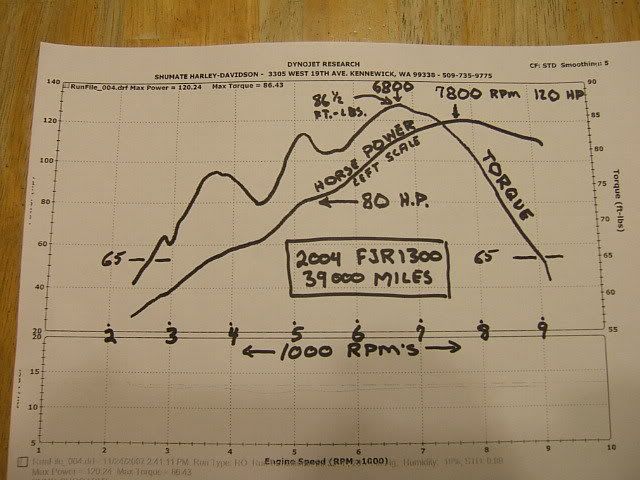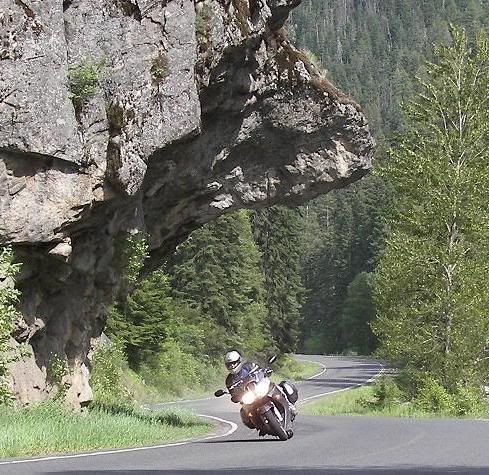UHOH
Well-known member
- Joined
- May 30, 2006
- Messages
- 329
- Reaction score
- 26
OK, does FJR1300 power fade away with miles, wear and how fast?
Today I took mine to a local shop (Shumate, Kennewick, WA) who was offering incentive dyno testing at the season tail-end.
My recollection is that Cycle-World(?) had tested these FJR's as putting out 123 HP at the rear wheel, and I don't recall the torque figure (anybody?).
Well, mine is a 2004. I use regular dyno oil, changed every 2000 miles; oil filters every 4000. Valves inspected @ 27,000 miles, no adjustment needed. It's as stock as stock can be...
OK, so today, at 39,000 miles and riding to the shop in 31F weather (cold!), my bike dyno tested
to 120 1/4 HP (7800-8000 rpm) and 86 1/2 ft-lbs. torque (6800 rpm).

During the dyno testing the exhaust was monitored and the technician said it was running rich the whole way and suggested that the air filter might be plugged. After returning home I checked my records (yep, it had been 12,000 miles since I'd even checked the filter, and I live on a dusty, gravel road). Plugged air filter - my bad; maybe that's why I thought it didn't feel as quick.
But, I think the bike is still running close to new power figures (memory) after 39,000 miles with just normal oil change maintenance and despite a probable plugged air filter. Comforting, as I look to keeping the bike for years still... [Need to do that air filter]
Has anyone else tested their bike after more or less miles?
OR HAVE ANY OTHER QUANTITATIVE MEASURE OF POWER RETENTION vs. MILES?
Even if it's imperfect, as mine is...
Oh, and here's a 2007 photo of the FJR on one of our scenic roads.

Today I took mine to a local shop (Shumate, Kennewick, WA) who was offering incentive dyno testing at the season tail-end.
My recollection is that Cycle-World(?) had tested these FJR's as putting out 123 HP at the rear wheel, and I don't recall the torque figure (anybody?).
Well, mine is a 2004. I use regular dyno oil, changed every 2000 miles; oil filters every 4000. Valves inspected @ 27,000 miles, no adjustment needed. It's as stock as stock can be...
OK, so today, at 39,000 miles and riding to the shop in 31F weather (cold!), my bike dyno tested
to 120 1/4 HP (7800-8000 rpm) and 86 1/2 ft-lbs. torque (6800 rpm).

During the dyno testing the exhaust was monitored and the technician said it was running rich the whole way and suggested that the air filter might be plugged. After returning home I checked my records (yep, it had been 12,000 miles since I'd even checked the filter, and I live on a dusty, gravel road). Plugged air filter - my bad; maybe that's why I thought it didn't feel as quick.
But, I think the bike is still running close to new power figures (memory) after 39,000 miles with just normal oil change maintenance and despite a probable plugged air filter. Comforting, as I look to keeping the bike for years still... [Need to do that air filter]
Has anyone else tested their bike after more or less miles?
OR HAVE ANY OTHER QUANTITATIVE MEASURE OF POWER RETENTION vs. MILES?
Even if it's imperfect, as mine is...
Oh, and here's a 2007 photo of the FJR on one of our scenic roads.

Last edited by a moderator:































































